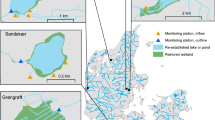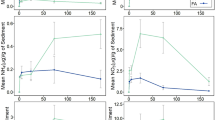Abstract
Wetlands play important roles in nutrient cycling, transforming and changing the mobility and biological availability of growth-promoting and, when in deficit, growth-limiting chemical substances. Nutrient cycling is a supporting ecosystem services. The supporting services are perhaps the most overlooked of all ecosystem services, relating largely to processes within ecosystems – also including soil formation, habitat for wildlife, photosynthetic productivity and oxygen generation, and water recycling – that though not directly consumed are fundamental for the resilience of ecosystems and their capacity to produce other, more directly consumed services.
Enrichment of ecosystems by mined phosphorus, remobilizing phosphorus sequestered by long-term processes, is a pernicious problem resulting in eutrophication of water and soils. Agriculture is a major source of diffuse nutrient pollution globally, representing a particular hazard to wetlands and their ecosystem services. However, wetland systems are effective at attenuating phosphorus, and this supporting service may potentially be exploited not merely to reduce nutrient loads from wastewater and diffuse run-off but also for nutrient recovery.
Access provided by CONRICYT-eBooks. Download reference work entry PDF
Similar content being viewed by others
Keywords
- Nutrient
- Cycling
- Phosphorus
- Nitrogen
- Silicon
- Supporting service
- Eutrophication
- Nitrification
- Denitrification
Introduction
Supporting services are perhaps the most overlooked of all ecosystem services. Supporting services relate largely to processes within ecosystems – including soil formation, habitat for wildlife, water and nutrient recycling – that though not directly consumed are fundamental for the resilience of ecosystems and their capacity to produce other, more directly consumed services. Wetlands play important roles in nutrient cycling.
Wetlands and the Phosphorus Cycle
The natural phosphorus cycle comprises in essence two interlocking phosphorus cycles: one operating at geological scale and the other at ecosystem scale (Everard 2001). Over geological time-scales (millions of years), there is a net movement of phosphorus from land to the seas and back again. Weathering and erosion from rocks results in the presence of phosphorus in terrestrial and aquatic systems, often in limiting concentrations. Once passed through ecosystem-scale cycles, phosphorus entering the oceans eventually accumulates in sinks on continental shelves and in inland basins and profundal depths in the form of insoluble deposits, gradually becoming locked away into rocks (i.e., partitioning from the biosphere into the lithosphere). Tectonic movements operating over geological time-scales raise crustal plates from the sea floor and expose phosphates and other phosphorus-rich deposits to weathering on land, completing the immensely long-term cycle involving release from the lithosphere to the biosphere. Wetland systems are involved in the initial sequestration of phosphorus, though geological processes are the predominant forces affecting this cycle. Water systems then have roles in remobilization of exposed phosphorus deposits.
Ecosystem time-scales operate extremely fast compared to geological time-scales, in reality operating at a range of temporal and spatial scales (seconds to decades or centuries). All of the diverse and adaptive ecosystems of this planet operate through the cyclic reuse of substances, powered by net inputs of energy from the sun (Odum 1982, 1983). All organisms within ecosystems require phosphorus, which comprises significant proportions of molecules in living cells (nucleic acids, NADPH, ATP, phospholipids, etc.) as well as the bones and teeth of vertebrates. Plant uptake of phosphorus from soils and the water column is in turn utilized by herbivores, carnivores, shredders, decomposers, and other functional components of the ecosystem. This results in phosphorus movement between water column, sediment, and biotic compartments (Mainstone et al. 2000) and produces complex patterns of phosphorus residence times, storage, transport, export, and concentrations within each compartment of the ecosystem (Hoffmann et al. 1996). Wetland systems play important roles in these ecosystem-scale transformations, manifesting primarily as supporting services.
Enrichment of ecosystems by mined phosphorus, remobilizing phosphorus sequestered by long-term processes, is a pernicious problem resulting in eutrophication of water and soils. Agriculture is a major source of diffuse nutrient pollution globally (Millennium Ecosystem Assessment 2005a), representing a particular hazard to wetlands and their ecosystem services (Millennium Ecosystem Assessment 2005b). However, wetland systems are effective at attenuating phosphorus, and this supporting service may potentially be exploited not merely to reduce nutrient loads from wastewater and diffuse run-off but also for nutrient recovery (Everard et al. 2012).
Wetlands and the Nitrogen Cycle
Whereas environmental sinks of phosphorus are in the lithosphere, nitrogen comprises some 79% of the content of the air. However, this atmospheric nitrogen is overwhelmingly in the molecular form N2, which is unavailable to most living organisms. However, a variety of microorganisms have the capacity to “fix” atmospheric nitrogen into biologically available forms (primarily ammonia NH3 and nitrate NO3-), making it available to natural cycles. Planktonic algae in both freshwater and marine wetlands, particularly various species of blue-green algae (cyanobacteria), are particularly important as nitrogen fixers. So too are a range of soil-based microorganisms particularly those living symbiotically in the roots of leguminous plants of the family Papilionaceae and some other plant families. Wetland locations may therefore be particularly important locations for nitrogen fixation.
Wetlands are also important for nitrification and denitrification processes, which collectively return nitrogen to the atmosphere. Nitrification is the biological oxidation of ammonia NH3, first forming the ammonium ion NH4+ and then converting this into nitrite NO2- and then nitrate NO3−. Nitrification is conducted by a range of microorganisms in aerobic conditions. Denitrification is also a microbial process in which nitrate is reduced by a large group of heterotrophic facultative anaerobic bacteria to produce molecular nitrogen N2 which is then released into the atmosphere. Nitrification and denitrification combine to recirculate biologically available forms of nitrogen back into the atmosphere. Wetlands are important locations for this coupled process, as closely juxtaposed aerobic and anaerobic microhabitats are common.
Humanity is also now a major source of nitrogen fixation, using a variety of industrial processes to “mine” nitrogen from the air for use primarily as agricultural fertilizer. Indeed, 50% of the nitrogen fixed on Earth now stems from human origins (May 2000). Fertilizer use increased fivefold between the 1960s and 1990s (WWF 1999), compounding eutrophication problems. The supporting services of wetlands may then have a key role to play in removing excess nitrogen contamination from point source and diffuse wastewater, averting some problems associated with eutrophication.
Wetlands and Other Nutrient Cycles
Other nutrients too may be important in promoting or limiting biological activity. For example, silicon is commonly limiting to the formation of diatom blooms in freshwater and some marine ecosystems during annual cycles. The supporting services of wetland ecosystems play important roles in cycling silicon as well as iron, manganese, and a range of other elements. However, the primary focus of this brief chapter is on the two nutrients of primary importance – phosphorus and nitrogen – which have generic similarities with other cycles mediated by supporting services.
Conclusions
The supporting services of wetlands play important roles in the cycling of nutrients, as sinks, sources and locations important for nutrient transformations. Wetlands thereby play important roles in wider connected ecosystems.
Wetland supporting services may also be exploited as a low-input means of reducing the impacts of anthropogenic eutrophication, and possibly also for recovery of some nutrients (particularly phosphorus) for beneficial reuse.
References
Everard M. Taking a systems-oriented view of phosphorus enrichment in fresh waters. Freshw Forum. 2001;15:35–54.
Everard M, Harrington R, McInnes RJ. Facilitating implementation of landscape-scale integrated water management: the integrated constructed wetland concept. Ecosyst Serv. 2012;2:27–37. doi:10.1016/j.ecoser.2012.08.001.
Hoffmann JP, Cassel EA, Drake JC, Levine SN, Meals DW, Wang D. Understanding phosphorus cycling: transport and storage in stream ecosystems as a basis for phosphorus management. Final technical report. Grand Isle: Lake Champlain Basin Program; 1996.
Mainstone CP, Parr W, Day M. Phosphorus and river ecology: tackling sewage inputs. Peterborough: English Nature and Environment Agency; 2000.
May R. A new beginning. In: A new century, a new resolution. London: WWF and The Guardian; 2000.
Millennium Ecosystem Assessment. Ecosystems and human well-being: synthesis. Washington, DC: Island Press; 2005a.
Millennium Ecosystem Assessment. Ecosystems and human well-being: wetlands and water synthesis. Washington, DC: World Resources Institute; 2005b.
Odum HT. Systems ecology. New York: Wiley; 1982.
Odum EP. Basic ecology. Philadelphia: Saunders College Publishing; 1983.
WWF. Living planet report. Godalming: Worldwide Fund for Nature; 1999.
Author information
Authors and Affiliations
Corresponding author
Editor information
Editors and Affiliations
Rights and permissions
Copyright information
© 2018 Springer Science+Business Media B.V., part of Springer Nature
About this entry
Cite this entry
Everard, M. (2018). Nutrient Cycling in Wetlands. In: Finlayson, C.M., et al. The Wetland Book. Springer, Dordrecht. https://doi.org/10.1007/978-90-481-9659-3_256
Download citation
DOI: https://doi.org/10.1007/978-90-481-9659-3_256
Published:
Publisher Name: Springer, Dordrecht
Print ISBN: 978-90-481-3493-9
Online ISBN: 978-90-481-9659-3
eBook Packages: Biomedical and Life SciencesReference Module Biomedical and Life Sciences




